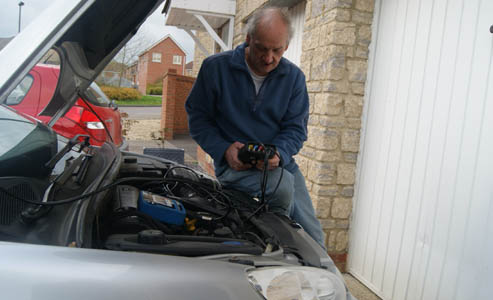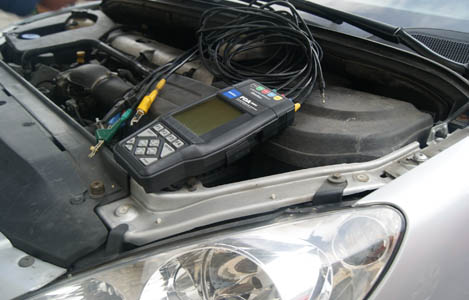
This vehicle came to me on the back of a customer recommendation and had a problem that proved to be anything but simple to resolve. The engine would start first time but any attempt to apply throttle was getting no response unless pumped or pushed to the floor. Once we acquired the right amount of fuel for a reasonable road/fuel pressure test, I noticed that the car ran extremely well at all constant speeds but the problem occurred in stop-start situations. With all this in mind I ruled out a fuel pressure problem.

As with every car, they all have their own history, so it was time to dig up the first clue. How did this all start? The man had owned the car for just over two years and made sure it went in for its annual service. He explained the problem had begun intermittently but progressively started to get worse. It was taken to a local garage, fitted with new plugs and coils but surprise, surprise the problem was still there.
Initial impression
Whilst in the workshop I had decided, for a change, to check the tail pipe emissions first as it is a quick and easy thing to do. My initial impression was good as they looked well within their limits and if there was a problem with fuel enrichment the emissions readings would be higher than normal (hence an open loop situation). Let’s save this information for later!

It was time to connect my scan tool and check on any fault codes – I found three faults stored. The first read ‘intake manifold pressure sensor short’. To assess this fault, tests were carried out on the MAP sensor and everything was working well within specification. The second (‘fuel injection’) and third (‘incoherence between two switches’) faults however, began to unravel a bit more of a story. The next step was to print and then clear the DTCs, restart the engine and see which of them returned. After a number of restarts one of them reappeared. The code in question was our third reading: ‘incoherence between two switches’ – just as I had suspected!
I couldn’t recall such a DTC from the past and I had to think about all the things I had on my side so far. The symptoms of the car were pretty straightforward: there was a severe situation by the ECU from throttle command or a delayed response to this. The next step was to try and identify the meaning of this very unusual DTC.
I decided to thoroughly examine the throttle to see what I could find from the cause. Firstly I looked at the throttle potensiometer which operates on a twin trade. One side operates or ‘drives’ the throttle body motor, the other side informs the ECU of the position the throttle pedal is in. Both sockets at the pedal were properly secured and it was easier to make the checks at the far end of the ECU. I wasn’t surprised that the voltage output was spot on!
Further checks
One useful thing to note is that a throttle position sensor of this type would close the system down or the limited operation system RPM would be fixed at around 1,250. On earlier systems, where the TPS system is fitted on the throttle body, these spots were quick and easy to find/check as when flat spots would occur during acceleration, complete lack of power would be evident and emissions would be high on idle.
While the engine was hot I noted the idle at around 650 RPM; ideally the motor should be running at 850 but at that point the emissions reading was still low. The next check was to visually monitor the throttle motor operation. A number of tests were carried out and to my surprise I found nothing out of the ordinary and everything was running perfectly. However, now that the engine was running, the story changed when the throttle command was applied.
The butterfly began to open then it returned back to idle position.
After sitting down and thinking it all through, the evidence pointed towards a faulty ECU, but I wasn’t going to condemn it just yet. A few weeks previous to this job I was presented with a car that had a minor fault. I discovered a DTC fault that showed a faulty ECU however it’s normal that, when certain adaptations reach maximum limits, an ECU related DTC will be stored. Time to get the scan tool out again.

The adaptions were all reset and the next step was to re-align the throttle potensiometer to the ECU by following this process:
■ Key on,
■ Engine off,
■ Press the accelerator pedal to the floor,
■ Hold for 10 seconds,
■ Press the pedal to the floor,
■ Turn the ignition off for one minute.
Once the final step had been underaken the engine started promptly. So there we have it – a full throttle pedal command restored!









